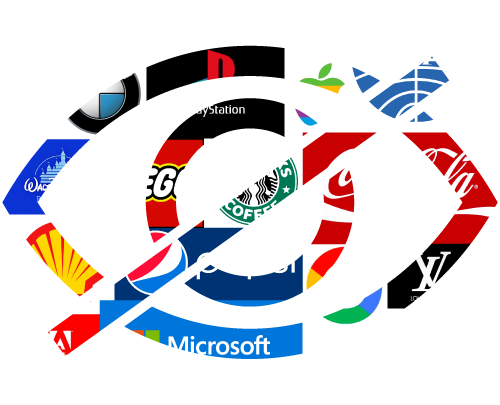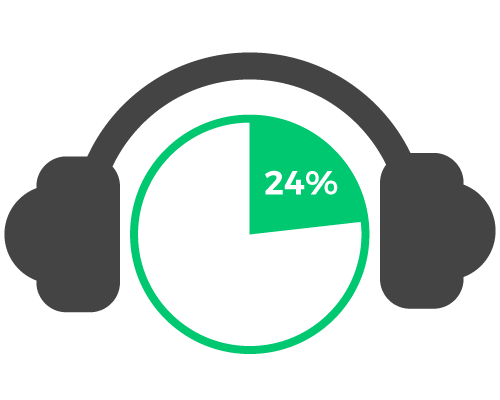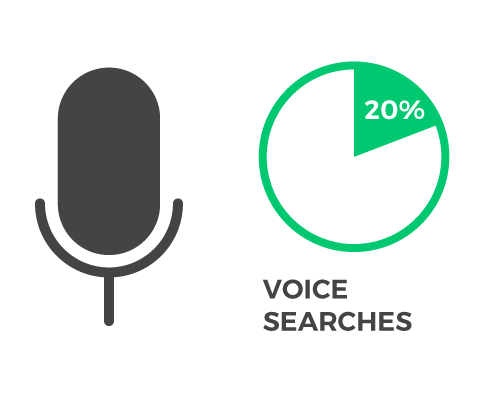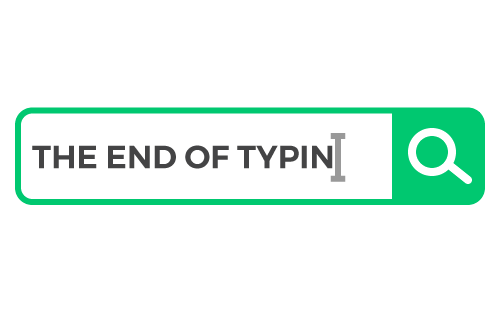3+3 = 2018, The Year of Audio Branding
We experience the world around us with multiple senses. The brand experience is no exception. We have relied heavily on visual branding, even though sight is trumped by hearing and scent on many levels. In 2018 we are moving on from a “visual only” approach and towards an “audio first” reality in marketing and brand development.
Here are 6 insights setting the mark for The Year of Audio Branding.
Where are we right now?
 1. Crowded visual space
1. Crowded visual space
Brands are all about experiences and stories. These have been widely distributed through marketing and branded content in the visual space. The ongoing rise of video content has created an environment where consumers are exposed to around 4000 to 10,000 brands and brand messages a day. With so much noise and competition, it’s a true challenge for brands to win the attention of their customers. As a matter of fact, we all have become experts at blocking these visual messages out, making it problematic for brands to get us engaged.
 2. Music and audio content consumption is growing
2. Music and audio content consumption is growing
We are listening to music more than ever. For example Nielsen has reported that in the U.S. the time spent listening to music is on average 32.1 hours per week (2016: 26.6 hours, 2015: 23.5 hours). At the same time podcast and audiobook consumption has risen in the past years. Edison has found that 24% of Americans (12+) are monthly podcast listeners. Seeing these developments it’s fair to say that we are consuming more and more content through our ears.
 3. Voice search & digital assistants are here
3. Voice search & digital assistants are here
Using a keyboard or our thumbs on a touchscreen isn’t really the most natural way to express ourselves. Since the early days of our species, we have always communicated with our voice. Now that technology supports voice as a channel of input, it’s no surprise that we are now talking to our devices. Actually Google stated already in 2016 that 20% of the searches on their Android devices are voice searches. With Amazon Echo, Google Home, and Apple HomePod on their way to becoming mainstream products, we are truly moving towards an audio first world.
Where are we heading?
 1. End of typing
1. End of typing
Ogilvy is stating the “End of typing” as the #2 trend for 2018, right after the #1 trend about how “Augmented Reality Gets Real” for brands. The end of typing here refers to the rise and development of user interfaces with voice and image interaction instead of tactile methods, like using our fingers and thumbs to communicate. When the input is done via voice it’s only natural that voice and sound are also the channel of output. This means that audio content will establish its position of influence and will change the way we think about content marketing and SEO. As a matter of fact Gartner predicted in 2016 that by 2020 30% of all the online content will be consumed without a screen.
2. Branded audio
“First came branded content, then branded videos. Next, make way for branded audio.” That is the prediction of JWT Innovation Group’s “Future 100” for 2018. Brands are already getting in the game of branded audio by creating their own podcasts and voice assistants. This is a new way and opportunity for brands to tell their stories but it also requires a delicate touch, so that they do not break the user experience in these audio-only medias.

3. Necessity of audio branding
As audio-only channels are becoming more popular in this new golden age of audio, companies need to establish more than just a visual brand identity. When the interaction and content are only in the audio format, the only branding tool for companies is also in the audio format. This means that brands without an audio identity will not exist in these new channels. Audio branding will become as crucial to brands as visual branding. Consumers are defining the types of content for brands, like we have seen with video and AR (think Snapchat). The same thing is happening with audio as we speak.





